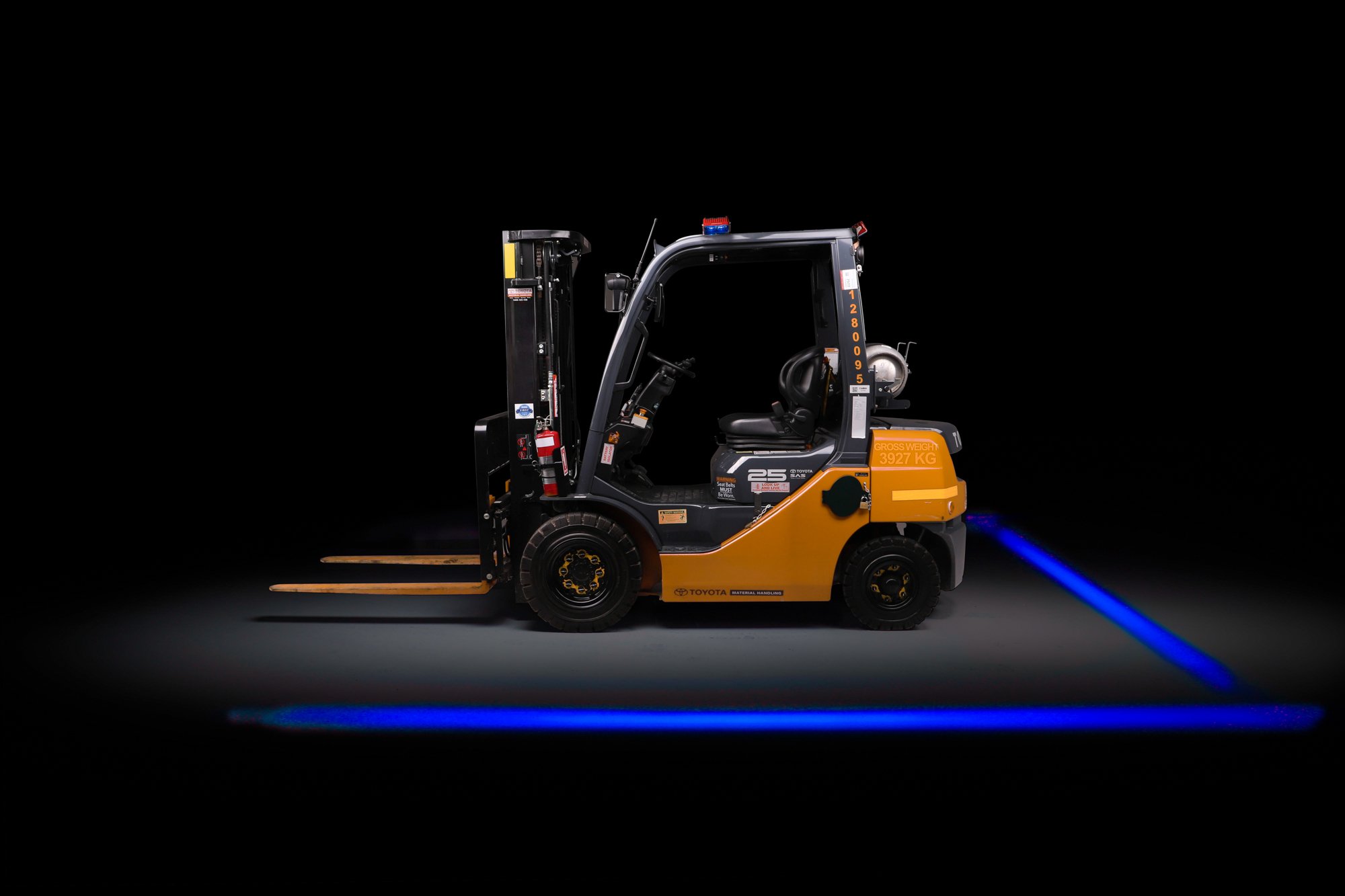TELEHANDLER
A telehandler, known for its telescopic boom and versatility, is indispensable across construction, agriculture, and industrial sectors. Its extendable boom facilitates lifting, transporting materials, and even acting as a crane with various attachments. However, safety concerns arise due to its elevated operator cab, creating blind spots that limit visibility around pedestrians and smaller vehicles. Manoeuvrability challenges in congested areas, stability issues on uneven terrain, and fall risks during lifting operations further underscore the importance of well-marked exclusion zones that leverage technologies like the Safety Halo system. This system utilises biophysics and psychology to instinctively guide personnel away from danger zones, significantly enhancing workplace safety and operational efficiency.
A telehandler, also known as a telescopic handler or telehandler for short, is a versatile piece of machinery widely used in construction, agriculture, and industry. What sets telehandlers apart is their telescopic boom, which can extend forwards and upwards from the vehicle, providing enhanced reach and versatility. This feature allows telehandlers to perform various tasks such as lifting and transporting materials, loading trucks, and even acting as a crane with the right attachments. The ability to extend and retract the boom makes telehandlers ideal for accessing hard-to-reach areas or lifting materials over obstacles. They are equipped with stabilisers for safe operation and can accommodate attachments like buckets, forks, and lifting platforms to suit different job requirements. Overall, telehandlers are valued for their flexibility, manoeuvrability, and capacity to handle diverse tasks across different industries efficiently.
Safety concerns involving telehandlers primarily revolve around their unique design features and operational capabilities, particularly in busy worksites where pedestrians and other mobile plant are present. Here are some key safety considerations:
Visibility issues: The elevated operator’s cab and the machinery’s size can create blind spots, limiting the operator’s ability to see pedestrians and smaller vehicles around the telehandler. This increases the risk of collisions, especially in areas that are congested.
Manoeuvrability: Telehandlers, while versatile, may have a wide turning radius and require adequate space for manoeuvring. In crowded or narrow work environments, this can pose challenges and increase the likelihood of accidental contact with pedestrians or other plant.
Boom operations: The extendable boom of telehandlers introduces additional hazards. Operators must be cautious when extending or retracting the boom to avoid striking nearby objects or individuals.
Stability concerns: Telehandlers have a high centre of gravity, which can lead to instability if operated on uneven terrain or when carrying heavy loads. This increases the risk of tipping over, potentially causing serious injuries to operators and bystanders.
Fall hazards: When using the telehandler’s boom to lift personnel or materials, there is a risk of falls if proper safety precautions are not followed. Adequate training and adherence to safety protocols are essential to prevent such incidents.
To mitigate these safety concerns, it is imperative to ensure people and other plant are outside the exclusion or operating zones of telehandlers. Implementing advanced safety technologies like the Safety Halo™ system can also enhance awareness and minimise the risk of accidents involving pedestrians and other mobile plant. The cleverly designed Safety Halo leverages a combination of biophysics and psychology that triggers instinctive reflexes for personnel to avoid entering hazardous areas, thus markedly decreasing the likelihood of accidents and bolstering safety throughout the work site.
Laser Safety Halo (Up to 10 m)
Made in USA, the Laser Safety Halo™ is the world’s first exclusion zone for large-scale mobile plant that leverages neuroscience to positively affect human behaviour and induce safety. Built to withstand the rigours of large-scale machinery, our Laser Safety Halo is the most effective exclusion zone system for mobile plant. Our Class 2 range of Laser Safety Halo products can project light up to 10 metres.
LED Safety Halo
Our original LED Safety Halo™ system offers the brightest LED exclusion zone lighting available by utilising narrow band Cree LED lighting—providing brighter, clearer, and more even light patterns and illumination. With our LED Safety Halo, you can enjoy exceptional performance and reliability due to temperature control design that enables higher power output and greater longevity.
Safety Halo Accessories
Our comprehensive range of Safety Halo™ accessories makes it simple and straightforward for you to install and connect our Safety Halo lights. Our range of accessories includes no-drill mounts for the Laser Safety Halo and the LED Safety Halo, surge protection and junction boxes with three to five connectors, a 10-metre extension cable, and an adjustable flasher relay.









